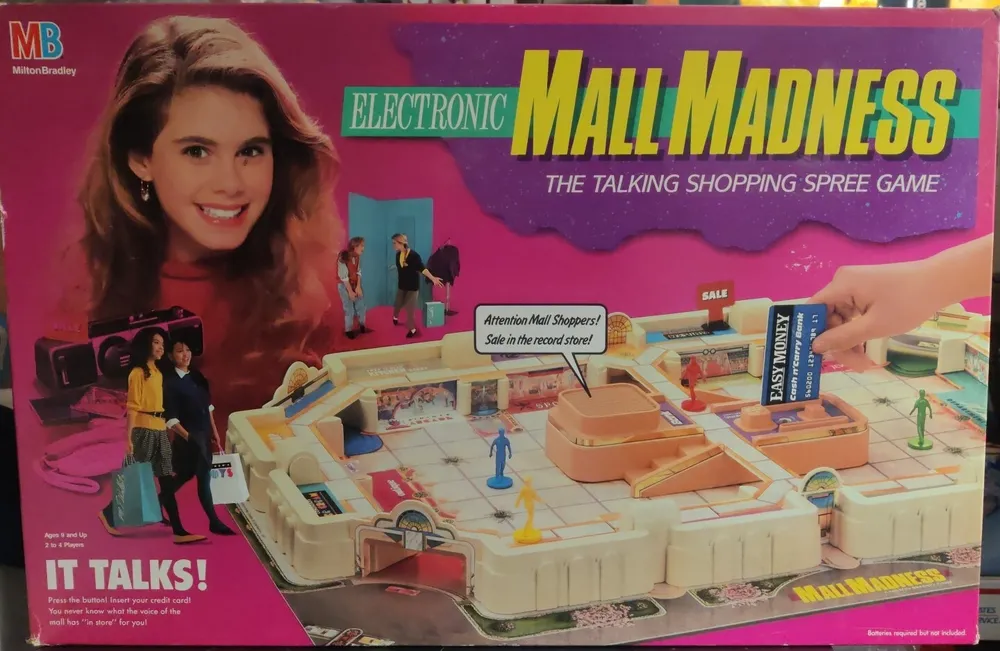Mall Madness (1988)
Mall Madness
“Mall Madness” is a shopping-themed board game released by Milton Bradley in 1988. The game was designed to capture the excitement of going on a shopping spree with friends and has been active since its initial release. The game has been re-released several times, including a 2020 edition.
Why is Mall Madness Popular?
The game is popular due to its nostalgic appeal and its ability to simulate the experience of shopping in a mall. It was released at the height of the 1980s shopping splurge, making it a perfect fit for the time. The game has been featured in commercials targeting a younger female demographic and has even had special-edition versions, such as Hannah Montana and Littlest Pet Shop.
Game Components of Mall Madness
How To Setup Mall Madness
To set up the game, players first assemble the game board, which includes attaching the plastic wall pieces and ensuring the rubber pads are in place to prevent slipping. Each player receives a shopping list and $150 in game money (or $200 in later editions), distributed in specific bill denominations. The electronic computer is placed at the center of the board, and the credit cards are distributed to each player. The game is ready to start once all players have their money, credit cards, and shopping lists.
Gameplay Mechanics and Game Objective
Player Experience
Playing Mall Madness is an immersive experience that simulates a shopping spree. Players navigate a detailed, two-story mall with various stores, utilizing an electronic computer that provides voice announcements about sales and clearances. The game encourages strategic thinking about when to use cash versus credit cards and how to take advantage of sales to complete the shopping list efficiently. The competitive element of being the first to return to the parking lot adds a thrilling rush to the game.
Pros
Cons
Personal Thoughts on Mall Madness
Mall Madness is ideal for children aged 9 and above who enjoy interactive and competitive games. It teaches basic financial management skills, such as budgeting and decision-making, albeit in a somewhat simplistic manner. For those nostalgic for the malls of the 80s and 90s, this game provides a fun and nostalgic experience. However, it may not be as appealing to players seeking more complex strategies or those who are critical of its financial themes.
We are supported by our audience. When you purchase through links on our site, we may earn an affiliate commission, at no extra cost for you. Learn more.

